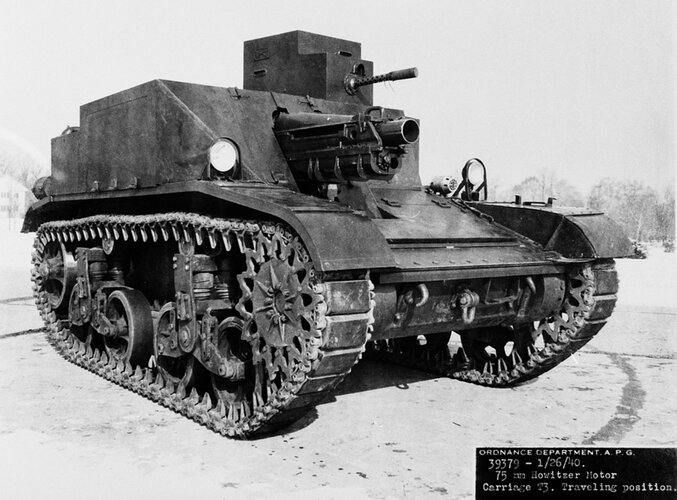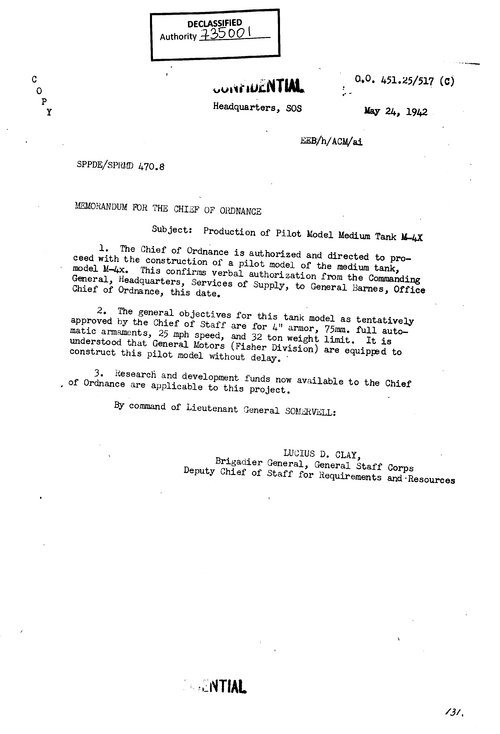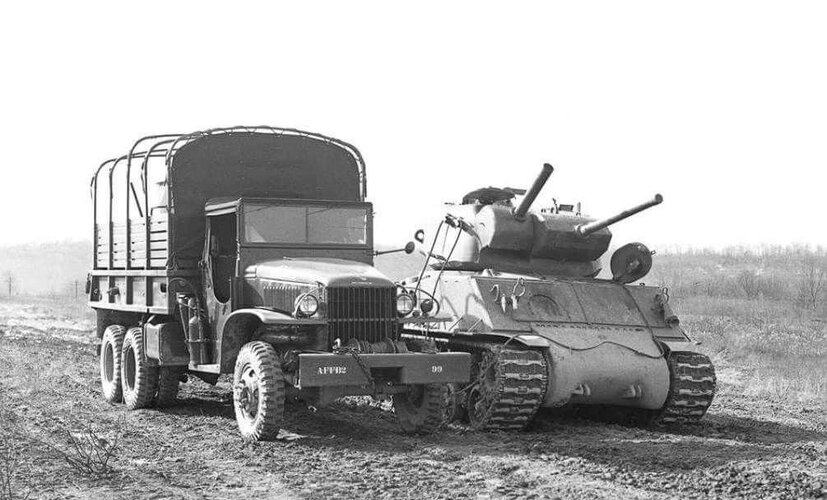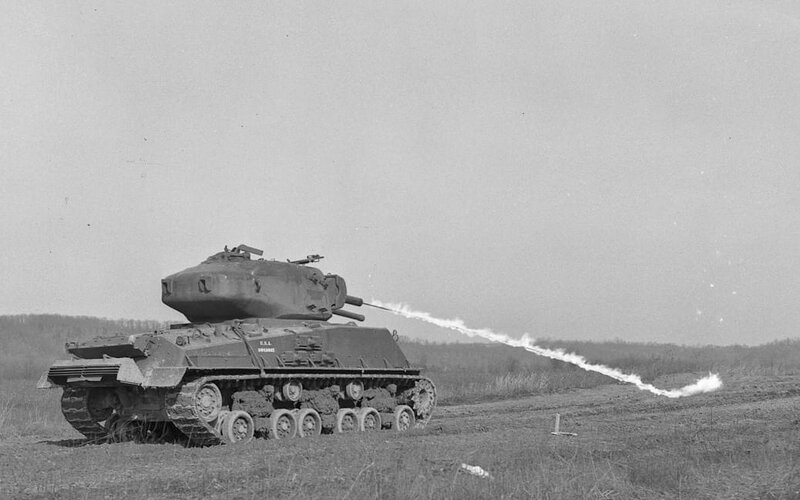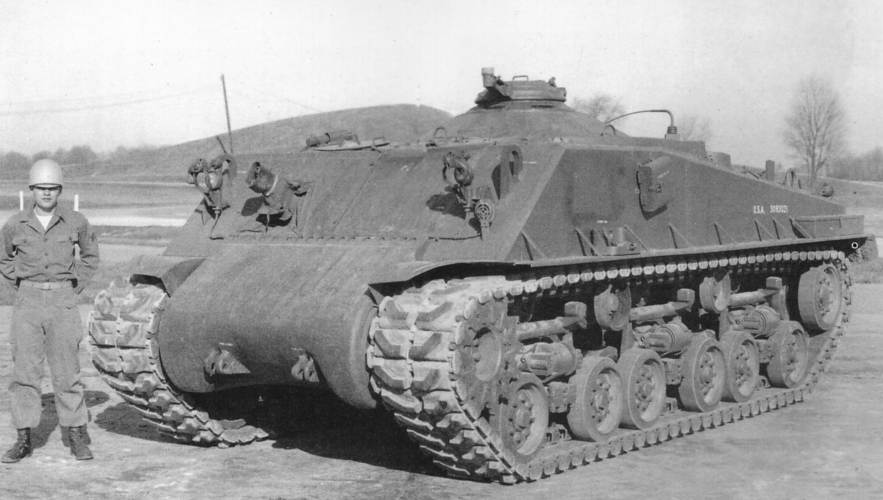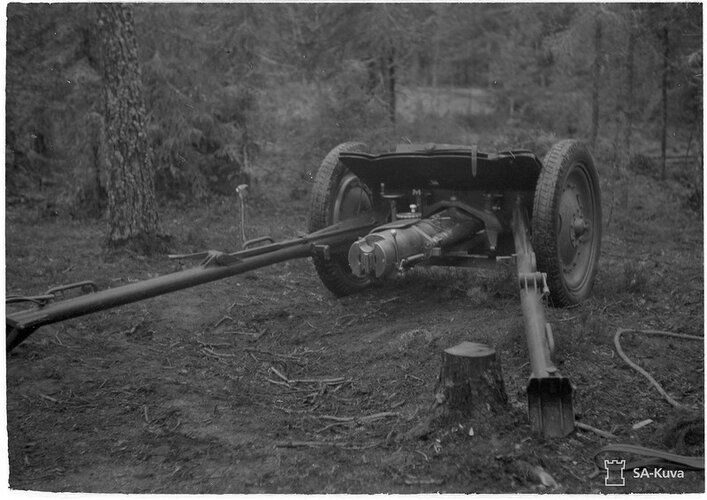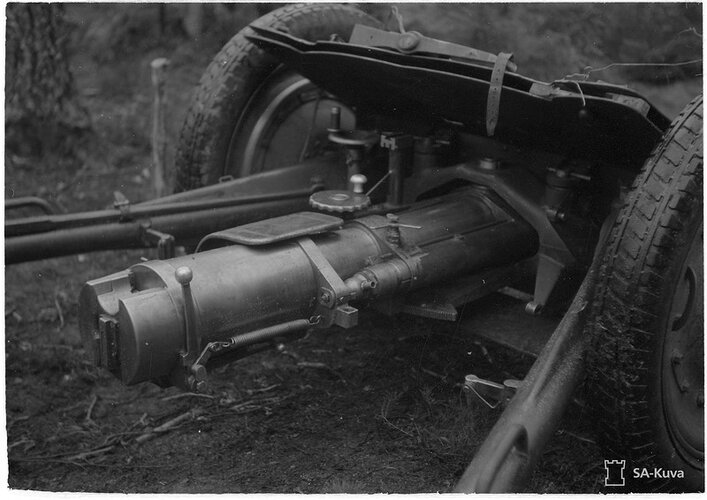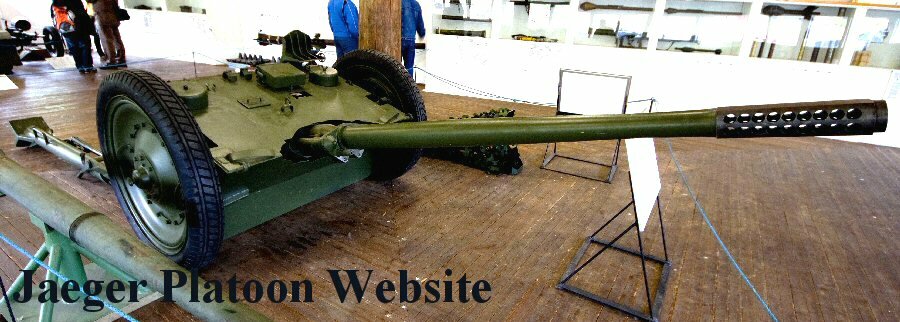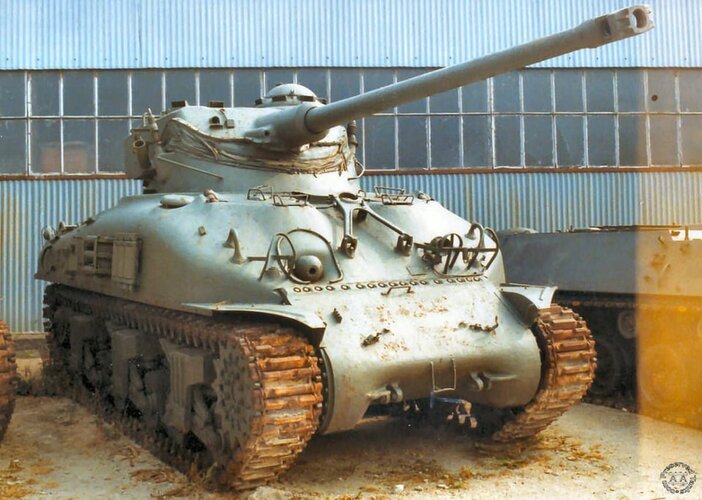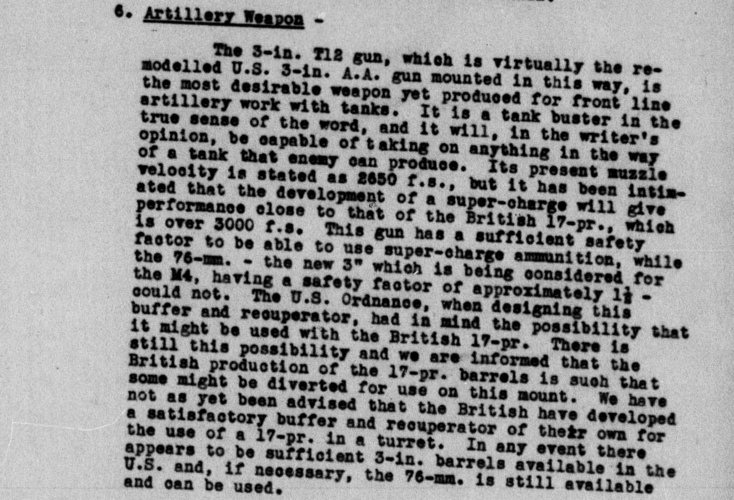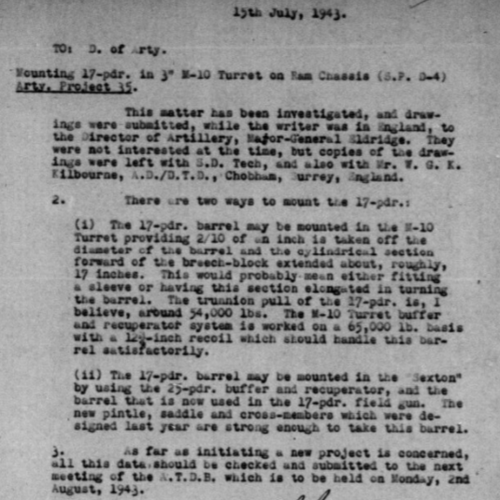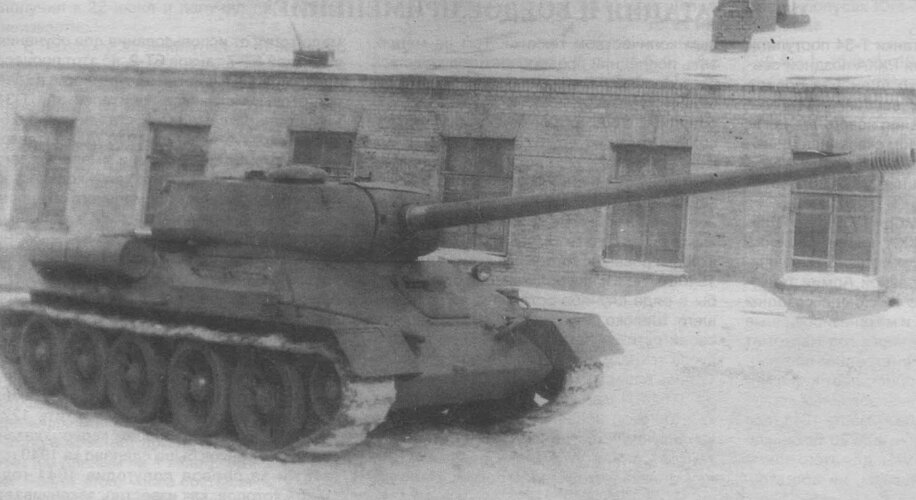OCR'ers note: First Page has a typewritten in red note saying:
3 June 1944
"To be reopened 1 Sep 44 - as per Col. Sanger's instructions"
---gmd-- |
THE ARMORED FORCE BOARD
FORT KNOX. KENTUCKY
LTH/ms
5 May 1944
SUBJECT: Armament for Medium Tanks for 1945 Production.
TO: The Commanding General, Army Ground Forces, Army War College, Washington, D. C.
1. The European Theater of Operations has been asked to state its requirements for armament for 1945 production of medium tanks. Colonel Heath who left London on Monday, 1 May 1944, brought the following tentative information which it is believed will he contained in the answer submitted by the European Theater of Operations stating requirements for armament. The requirements set forth herein must be considered as tentative until the official reply has been received, by the War Department from the European Theater of Operations The following requirements were tentatively set up in ETOUSA headquarters on Monday, May 1:
a.
Armament. The theater wants armament as follows:
105-mm Howitzer (75% of the tanks).
90-mm Gun (25% of the tanks)
The two types of armament are definitely desired. The proportions must be considered as tentative.
b.
Ammunition. Seventy (70) rounds of ammunition is the minimum acceptable in each tank, with both types of weapon. Seventy (70) rounds is to be considered as the minimum figure -- more rounds are urgently desired.
c.
Mobility. The theater desired no reduction in mobility. Additional armor is not desired if it cuts into mobility. The theater considers the mobility of Medium Tank, M4A1, (radial engine), as unsatisfactory because it is under-powered. The standard of mobility desired is the Medium Tank, M4A3, (Ford engine).
d.
Width. Widths greater than 124 inches are acceptable only if bridges capable of handling the wider tanks are furnished.
e.
Bow Machine Gun. The bow machine gun to be retained.
f. It must be kept in mind that tanks must be moved by transporters.
g. Reduced unit ground pressure is desired.
2. In accordance with verbal instructions of Commanding General, Army Ground Forces, the following discussion and recommendations on means of meeting the European Theaters of Operations requirements are presented.
a.
Medium Tank, T25E1.
(1) This tank has the following advantages:
(a) Has been designed with the 90-mm gun turret.
(b) Has a torque converter, which simplified, driving.
(c) Has an improved suspension, providing a smoother ride.
(d) Will provide improved ground pressure characteristics if equipped with the Medium Tank, T26E1, (24") track and suspension.
(e) Has a favorable silhouette.
(2) This tank has the following disadvantages:
(a) It will not meet the theater's stated requirement for ammunition. Extreme difficulty is being encountered in providing an accessible stowage of fifty-two (52) rounds of ammunition.
(b) A satisfactory turret for the 105-mm howitzer has not been built.
(c) This tank is a new design and its mechanical perfection is not yet complete. It must be expected that it will have to go through a period of "teething" troubles.
(d) Wide bridges are required if this tank is to be used.
(e) The rate of fire will be very slow unless vast improvement can be made in the ammunition stowage. This improvement is doubtful.
(f) Progress is slow on the development of a smokeless, flashless round of ammunition for the 90-mm gun.
(g) The time required to place this tank in production will be considerable and it is estimated that adequate quantities for combat service cannot be available before May 1945.
(h) Considerable training will be required when units previously equipped with Medium Tanks, M4 Series, are reequipped with this tank.
(i) When the T26E1 track and suspension are added the weight of the tank now at 78000 pounds will be increased between 2000 and 3000 pounds.
b.
Medium Tank, M4A3, with 90-mm Turret. It is possible that the requirements for the European Theater of Operations can be met by mounting a 90-mm gun turret, similar to the T25 design, on the hull of the Medium Tank, M4A3. The hull of Medium Tank, M4A3, will be equipped during the latter part of 1944 production with the 23-inch track and the horizontal volute spring suspension.
(1) Such a tank will have the following advantages.
(a) It is estimated that between 60 and 70 rounds can be stowed in this tank without overcrowding the fighting compartment.
(b) There is in production in 1944, a 105-mm Howitzer turret on this tank.
(c) The mechanical components of this tank are very well developed and proven.
(d) The change in spare parts to insure adequate maintenance will be a minimum.
(e) The re-training required for troops to be re-equipped with this tank will be a minimum.
(f) This tank can use existing 124-inch bridges.
(g) This tank can be transported on existing transporters.
(h) The time required to place this tank in production will be a minimum, since no new hull and mechanical components are required. The principal design work required will be to design the stowage arrangements.
(2) This tank will have the following disadvantages:
(a) Increase in height of silhouette due to the greater height of the 90-mm turret. (Approximately 4-3/8 inches over the M4A3 with 76-mm gun and one foot higher than T25E1).
(b) Will have less armor protection than the Medium Tank, T25E1, but will be equal to the M4 on the hull and greater on the turret.
(c) The suspension will not provide as satisfactory riding characteristics as the Medium Tank, T25E1, suspension.
(d) Estimated weight of the Medium Tank, M4A3, with the 90-mm gun turret is as follows:
| Weight of Medium Tank, M4A3 w/76-mm Gun and Horizontal Volute Spring Suspension (Actual) | 76000 pounds. |
| Weight of Turret Assembly, Medium Tank, T25E1 | 18740 pounds. |
| Weight of Turret Assembly, Medium Tank, M4A3, w/76-mm Gun | 14250 pounds. |
| Difference | 4490 pounds |
| Estimated Gross Weight of Tank | 80490 pounds. |
(3). A new tank involving a new hull design, to meet the requirements of ETO. Such a tank might be built by redesigning the hull of the T25E1 using mechanical components that have been developed for this tank. The main feature of such a redesign would be an increase in the cubic contents of the fighting compartment to permit the stowage of a minimum of 70 rounds of ammunition.
(a) Advantages.
(1) It would provide a hull more properly redesigned for the weapon to be mounted.
(2) A new design would specifically meet the ETO requirements.
(b) Disadvantages.
(1) It would be virtually impossible to complete a new hull design and incorporate production in 1945.
(2) Armor thickness would have to be reduced to accommodate the increased bulk. Thus the increased armor advantages of the T25E1 hull would would be lost.
c. The resulting hull to meet the specific characteristics of ETO would probably closely resemble the hull of the Medium Tank, M4A3.
3.
Possible Compromises in Using the Medium Tank, T25E1. The most difficult requirement to meet in using this tank is the requirement for 70 rounds. It is estimated that a maximum of 52 rounds can be installed in the present tank. By eliminating the bow machine gun and bow machine gunner and using this space for ammunition, it is estimated that an additional 18 rounds could be stowed. This ammunition would be without water protection.
Modification of the Hull of the T25E1 to Install Sponsons. This would require increasing the height of the hull, adding considerable armor plate, and in effect, would amount to new hull design since the roof of the tank would have to be raised.
4. Since the European Theater of Operations has established requirements, it is believed highly desirable that they clarify their desires on the following points:
a. When are 90-mm gun tanks desired in combat? If the T25E1 is used, it is unlikely that combat quantities of these tanks can be manufactured before May or June 1945. If M4A3 tanks mounting the 90-mm gun are used, combat quantities might be provided in January 1945.
b. Will the theater accept the Medium Tank, T25E1, with the maximum stowage of 52 rounds of ammunition in order to obtain the advantages of the torqumatic drive, the improved suspension, and additional armor?
c. Will the theater accept Medium Tank, T25E1, with the bow gunner eliminated, in order to meet the requirement of 70 rounds of ammunition?
d. Since it is contemplated by the theater to have the entire 1945 production equipped with 90-mm gun and 105-mm Howitzer, does the theater desire gyrostabilizers on these weapons? The existing turret designs for mounting these guns does not incorporate the gyrostabilizer.
e. With reference to question c, above, if the theater accepts the Medium Tank, T25E1, with a maximum stowage of 52 rounds of ammunition, would the theater desire to introduce a full tracked armored ammunition carrier into the tank organizations to facilitate battle field re-supply of ammunition to individual tanks?
f. Will the theater accept the Medium Tank, M4A3, mounting a 90-mm gun including the following features, as meeting their requirement?
(1) 23-inch wide track.
(2) Horizontal Volute Spring Suspension.
(3) Gross weight of approximately 80,400 pounds.
(4) High speed reverse.
(5) Increase of silhouette 4-3/8 inches above M4A3 w/76-mm gun.
(6) Ammunition stowage between 60 and 70 rounds.
5.
Medium Tank, T26E1. This tank has the same disadvantages and advantages as the Medium Tank, T25E1, except that its increased weight will reduce its mobility and it will thus not meet the European Theater of Operations requirements.
6. In the opinion of the Armored Board none of the available tanks are entirety suitable as 90-mm gun-carrying tanks. It appears that none of them will completely meet the requirements established by the European Theater of Operations. The Medium Tank, T25E1, has its principal deficiency in the matter of ammunition stowage and incomplete development. The Medium Tank, M4A3, with 90-mm gun turret has less disadvantage in the matter of ammunition stowage, but has greater advantages from the standpoint of being readily placed in production, causing less disturbance in the spare parts supply, and in the training of troops. In the opinion of the Armored Board, the use of a 90-mm turret on the M4A3 chassis: offers the most promising means of meeting the European Theater of Operations requirements. A powerful consideration in this opinion is the fact that, with proper support, the Medium Tank, M4A3, with 90-mm gun can be made available in combat quantities from six to eight months earlier than the T25E1. Both the Medium Tanks, T25E1, and the Medium Tank, M4A3, with the 90-mm gun, when ready for battle will weigh approximately 80,000 pounds. Thus it appears that neither solution -will entirely meet the European Theater of Operations desires in the matter of mobility. In any event, adoption of either the Medium Tank, T25E1, with T26 suspension, or the Medium Tank, M4A3, with the 90-mm gun, can be regarded as only an unsatisfactory expedient for providing a 90-mm gun tank. Every effort should be made to design a tank that will be a satisfactory 90-mm gun tank.
7. The most important consideration in determining which expedient will be used to meet the European Theater of Operations requirement is the question of when 90-mm gun tanks are required on the battle field in Europe. For this reason it is believed essential that the European Theater of Operations be queried on the points enumerated in paragraph 4, above.
8. The Armored Board recommends that:
a. Based upon the limited information at the present time available, the Medium Tank, M4A3, mounting a 90-mm gun turret be considered as the most promising means of meeting the European Theater of Operations requirement for a 90-mm gun tank.
b. Before a final decision is taken, the European Theater of Operations be asked to provide answers to the questions raised in paragraph 4, above.
c. The design begin immediately to provide a 90-mm gun tank of improved design that will meet the characteristics recently forwarded by the Armored Board.
/S/
FRANK R. WILLIAMS
Colonel, Infantry
President

